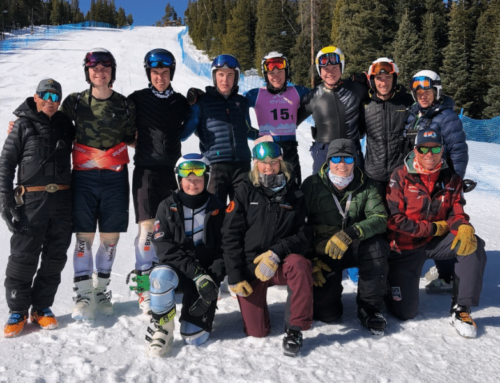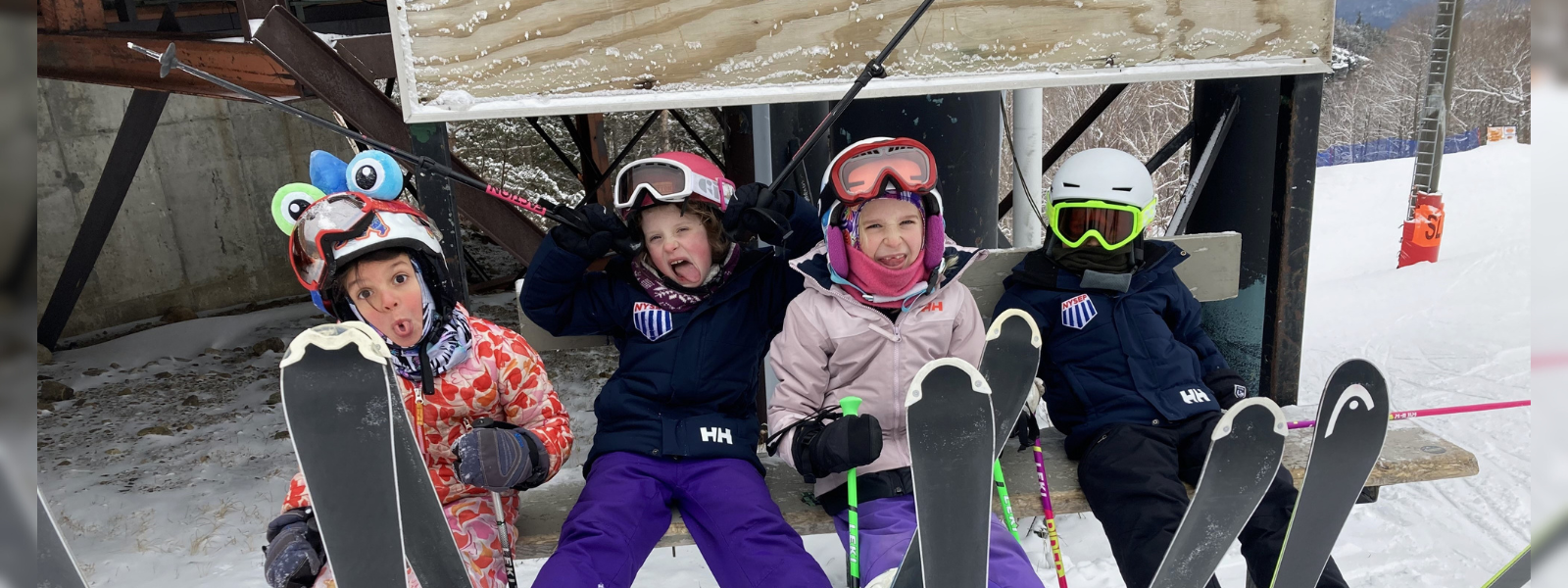Going For A Globe
Too old to win a World Cup? There’s another option – the FIS Masters Cup, the pinnacle of adult age-group ski racing. Like the regular World Cup, each winter the FIS sanctions races around the globe that count toward overall titles in super-G, GS, slalom (there’s no downhill) and for first, second and third in each five-year age group. Those winners get crystal globes like the ones Mikaela Shiffrin and Marcel Hirscher have on their mantles. I recently returned from the FIS Masters Cup Finals in Abetone, Italy. The two globes now in my living room represent the pinnacle of my 26 years on the Masters circuit.
In the United States, you must be 18 years old to enter a Masters race. But in FIS Masters racing, the minimum age is 30. As a result, if you are, say, in Class 7 (ages 55 to 59) in the U.S., you will be in Class 6 in an international race. FIS Masters GS races are only one run in Europe and usually the last race of the weekend, to allow Europeans to drive home at a reasonable hour. About 300 skiers compete at most FIS Masters races in Europe, including about 80 to 90 women, the average size of the entire field for most USSA-sanctioned Masters races in the U.S. Additionally, skiers earn FIS points on the FIS Masters circuit which determines ranking and seeding throughout the winter. If there’s a tie at the end of the season, the person with the lowest FIS points, added up from among the nine best finishes, wins.
Unless you’re retired and/or independently wealthy, going for a FIS Masters globe is not a decision made lightly for a North American due to the cost and necessary time commitment. Pepi Neubauer, who won it all in 2016 – the three discipline globes and his age group – spent $20,000 traveling to Chile, Colorado, and on multiple trips to Europe. Most North Americans spend $10,000 to $15,000 chasing a globe. But it’s worth every penny, not only for international competition, but also for the cultural experiences and the interesting people you meet along this ski racing journey.

The globes! Image Credit: Lisa Ballard
Assuming you’ve got the skill, here’s how to go for a FIS Masters globe:
- Pick the winter wisely. Commit to the circuit when your toughest competition is not in your age group (fis-ski.com). If they’re the same birth year as you, see No. 2 below.
- Pick your races strategically. 40-45 FIS Masters races are scheduled each winter, beginning with four starts in mid-September in Chile. Most of the events are in Europe. There are also four starts in North America. Next winter, the FIS Masters Criterium (World Championships) is at Big Sky. FIS also sanctions races elsewhere in the world, including Japan and New Zealand, but they do not count toward a globe. Be sure to pick events designated as “FMC” (not “MAS”) on the FIS Masters calendar which is approved at the FIS Congress at the end of May. Your best nine finishes count, but plan on at least 15 starts. Fifteen races give you a buffer, as even the best athletes make mistakes or get out-skied occasionally. And you must attend the finals, which are always in Europe and worth double points. The races in Eastern Europe tend to be slightly less competitive than the ones in Western Europe. Unless you want to spend most of the winter in Europe, the best strategy is to go to Chile in September, the races in North America and the finals in Europe, which gives you 10 starts. Fill in the remaining five races with at least one more trip to Europe that spans two weekends. All sites host a slalom and GS. Look for at least one three-day event with a super-G in the mix.
- Contact USSA. To enter a FIS Masters race, you must have a FIS Masters license in addition to your USSA license, which Bill Skinner (USSA Masters Coordinator) can arrange for you. Skinner must also submit the entries for Americans in races outside of the United States. In the U.S., you can enter races the normal way, through SkiRaceReg.com.
- Book your travel early. Start looking for airfare deals and frequent flier tickets now for next ski season. The local race coordinator has a list of recommended hotels, which most people book either directly with the hotel or through Booking.com. Rental cars can be reserved a week or two in advance of your trip. In Europe, most rental car companies require you to rent chains or special winter tires to drive into any mountain regions.
- Get a jump on jetlag. Plan to spend two days lightly free-skiing on the race hills and getting adjusted to the time change when you fly to Europe, especially before the finals which are so critical point-wise. One day is not enough.
- Attend the team captains’ meetings. There is a team captains’ meeting the night before every race, during which the next day’s schedule is confirmed and other nuances of the event are announced in the local language and in English. You can usually pick up your lift ticket and bib then, too.
- Bring cash. You can use credit cards to pay for most hotels, restaurants and rental cars, but you’ll likely need to pay cash for entry fees (15 euros per race), lift tickets (about 25 euros per day), gas if the gas station has no attendant (about 70 euros to fill a tank), and highway tolls (up to 30 euros depending on your route). You need to tip for everything in Chile and very little in Europe. Be sure to notify your credit card bank where you are traveling.
- Bring food on race day. You may miss breakfast due to an early start time, and you probably won’t have time for lunch between runs. Ditto a water bottle that you can refill.
- Go fast! The competition is deep and skilled. That’s the allure of FIS Masters competition and the fun. You’ll need to put your best runs down the hill to be a contender.

Anne Nordhoy receives her globe for finishing first overall in Women’s Class 10. Image Credit: Lisa Ballard
Five North Americans earned FIS Masters globes during the 2016-17 season. Congratulations from SkiRacing.com to:
Anne Nordhoy (USA): first place overall Women’s Class 10
Lisa Ballard (USA): third place overall Women’s Class 6, first place super-G
Mike Robbins (CAN): second place overall Men’s Class 7
Davide Davi (USA): third place overall Men’s Class 4, first place super-G
Matt Johnson (USA): second place overall Men’s Class 2





















